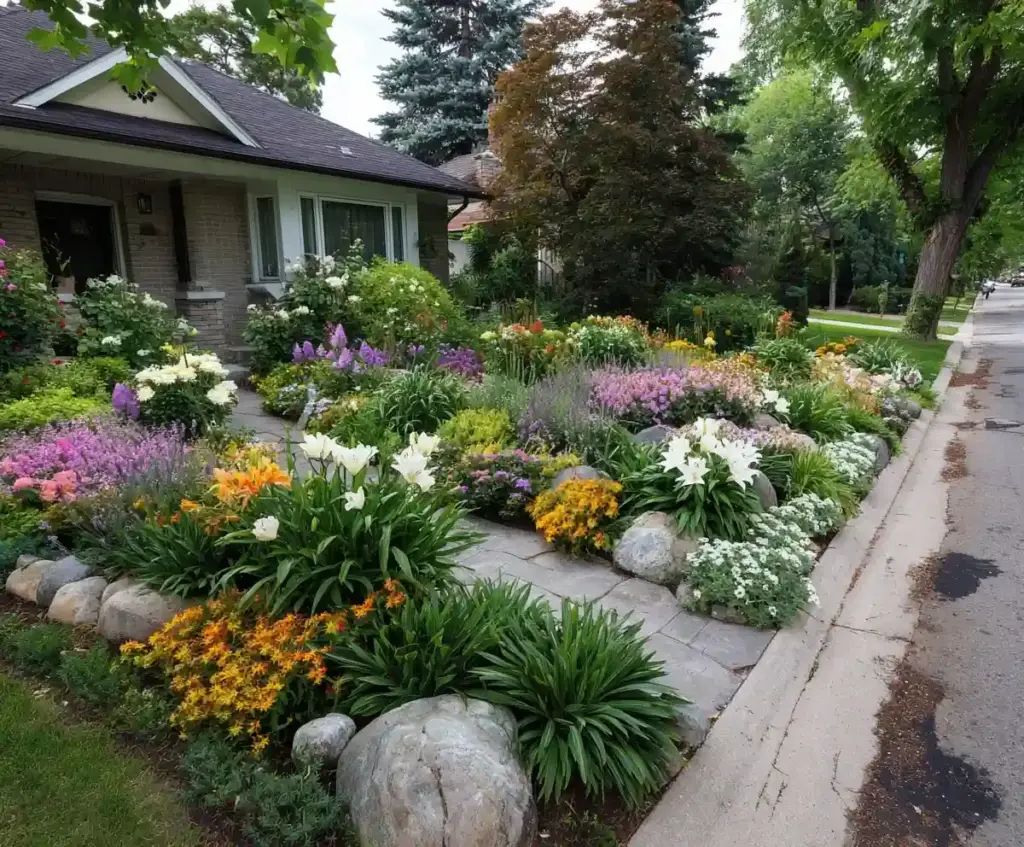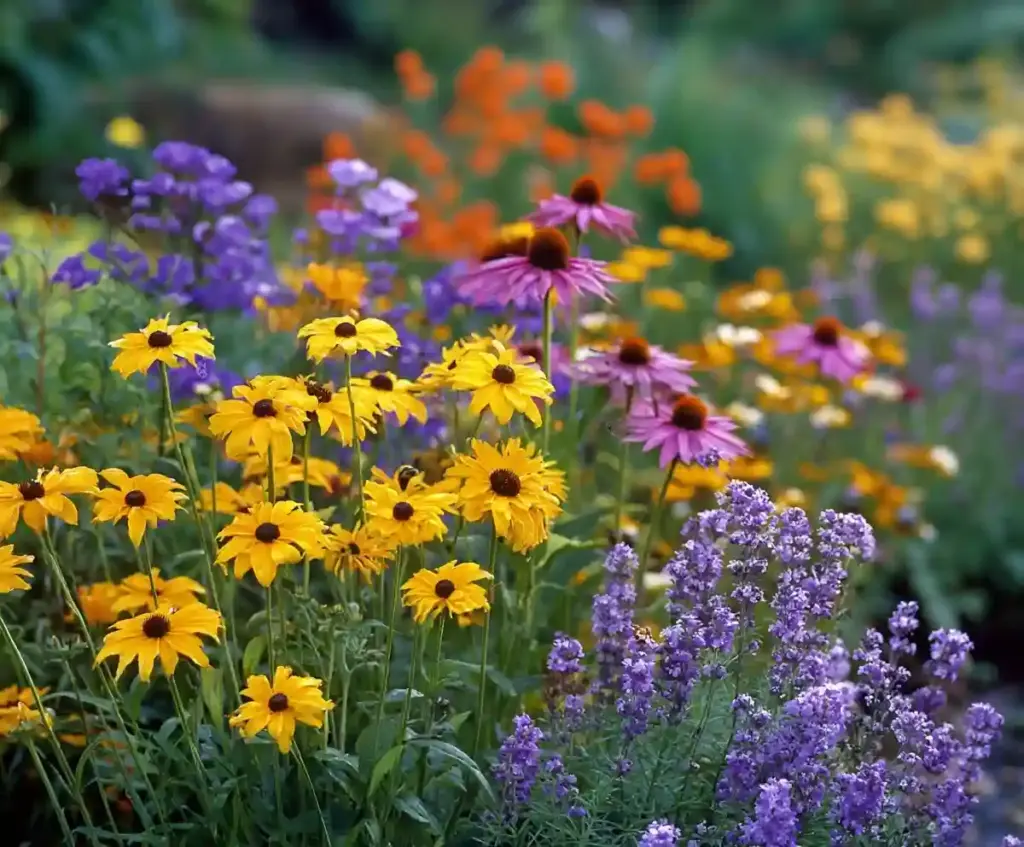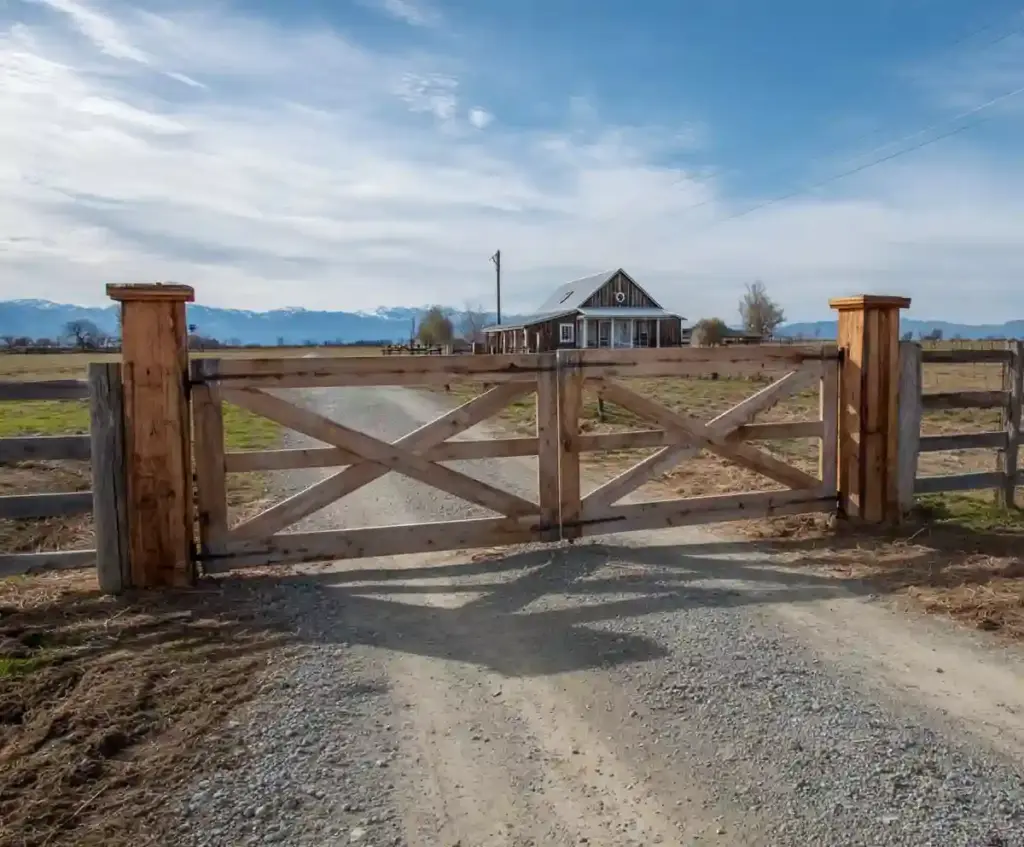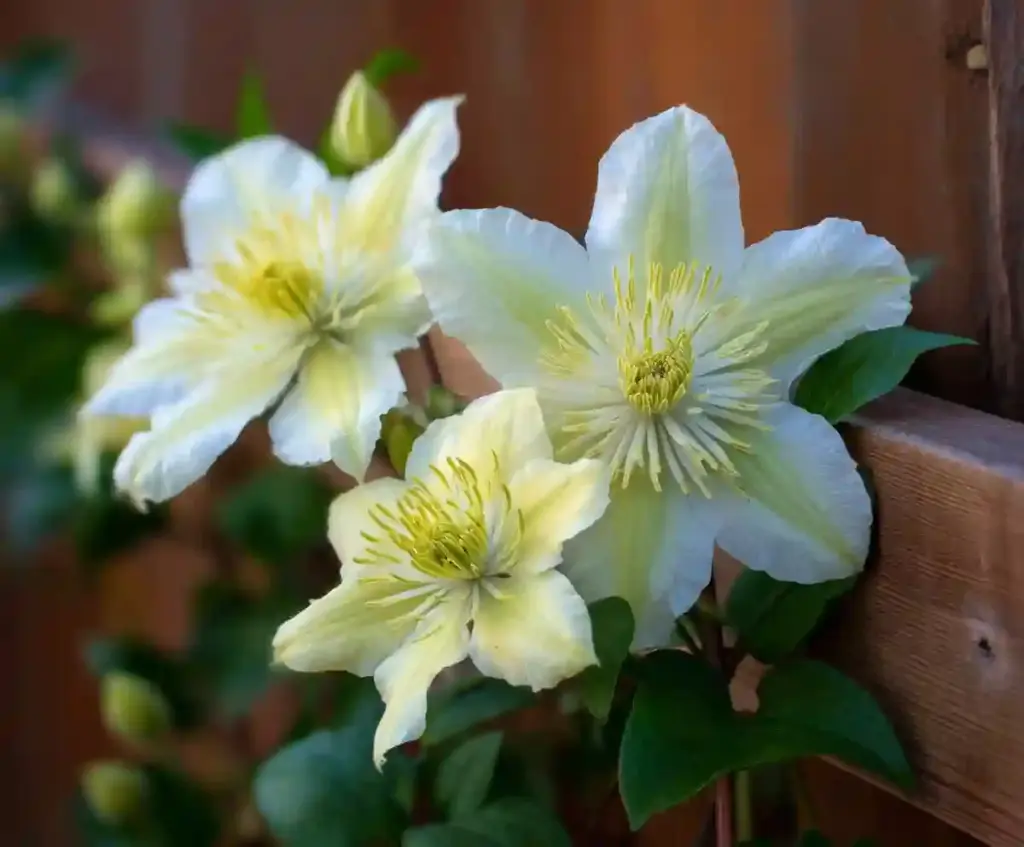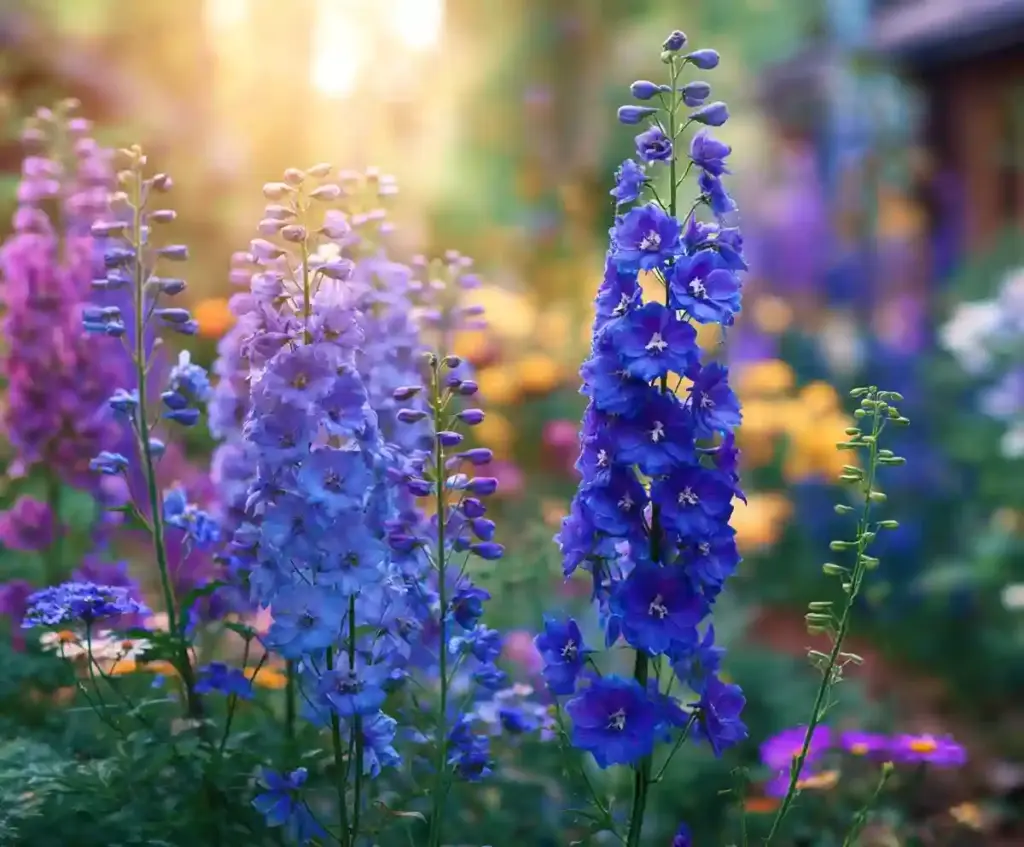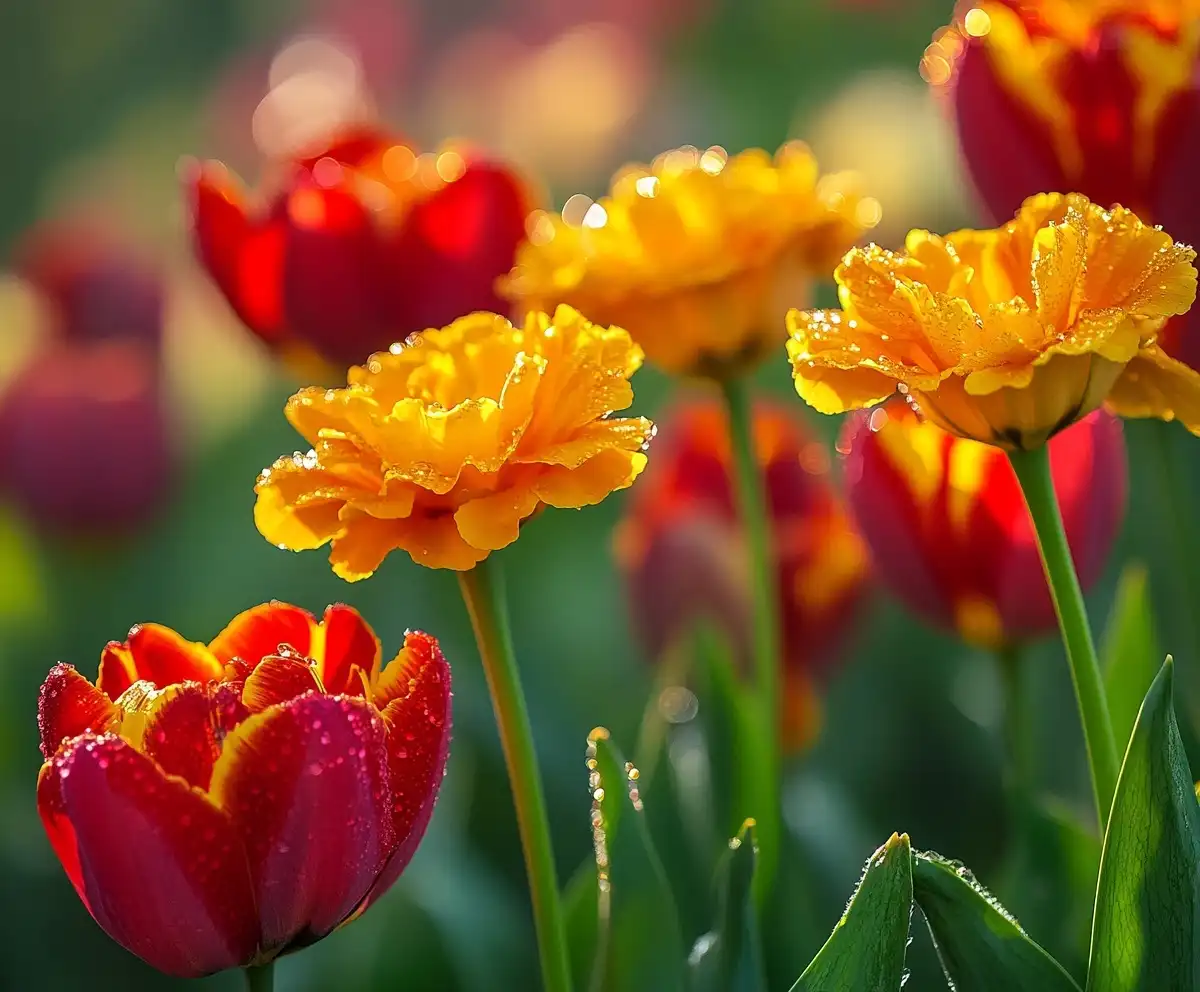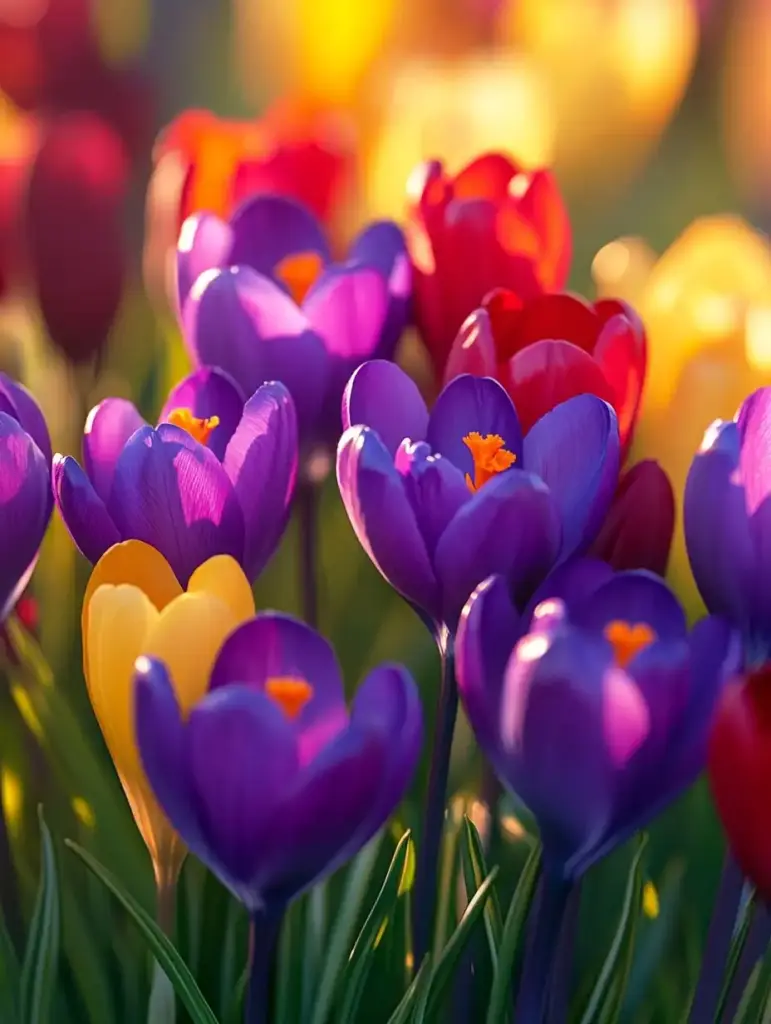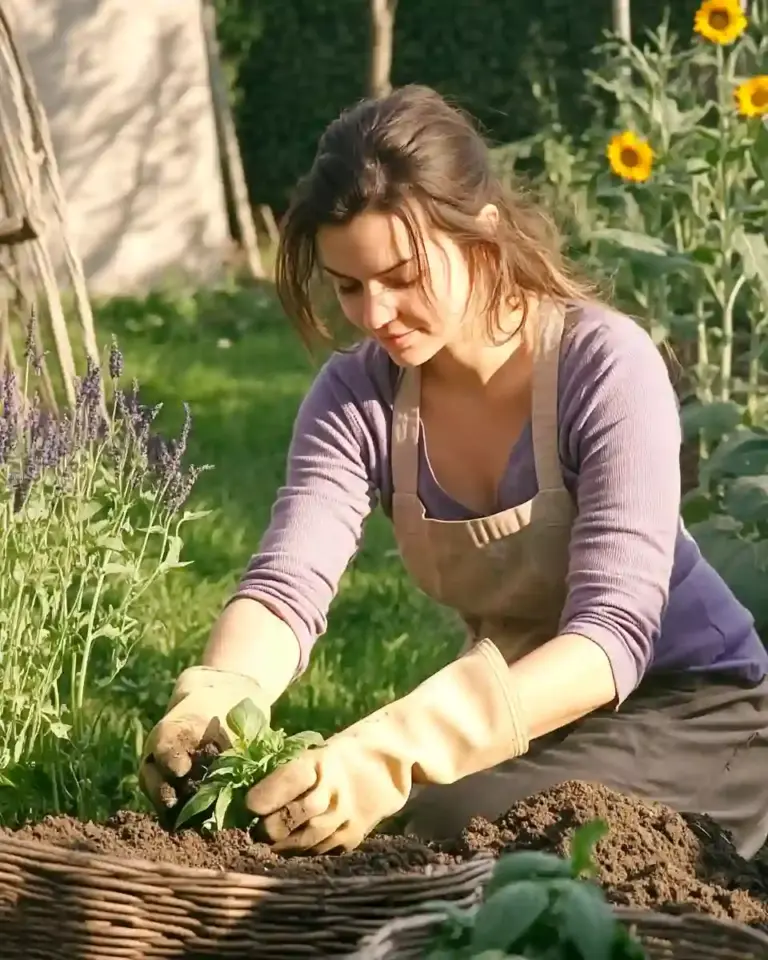Plants to grow with tulips help extend your garden’s beauty well beyond spring. While tulips shine early in the season, their blooms fade fast—leaving gaps unless paired wisely. Smart companion planting fills those gaps with color and texture.
The right partners can also improve soil health, deter pests, and support tulip growth. If you’re planting in containers, check our tulip potting guide. Let’s look at 14 plants that pair perfectly with tulips for a seamless spring-to-summer transition.
Table of Contents
1. Crocus
Crocuses are among the earliest bloomers, often flowering alongside or just before tulips. Their small, goblet-shaped flowers create a soft base of color that enhances the tulip display.
They thrive in full sun to partial shade and well-drained soil, preferring slightly acidic to neutral conditions. Once established, crocuses require very little maintenance and will return year after year if left undisturbed. Plant them in clusters around tulips to achieve a naturalized, meadow-like look.
2. Grape Hyacinth
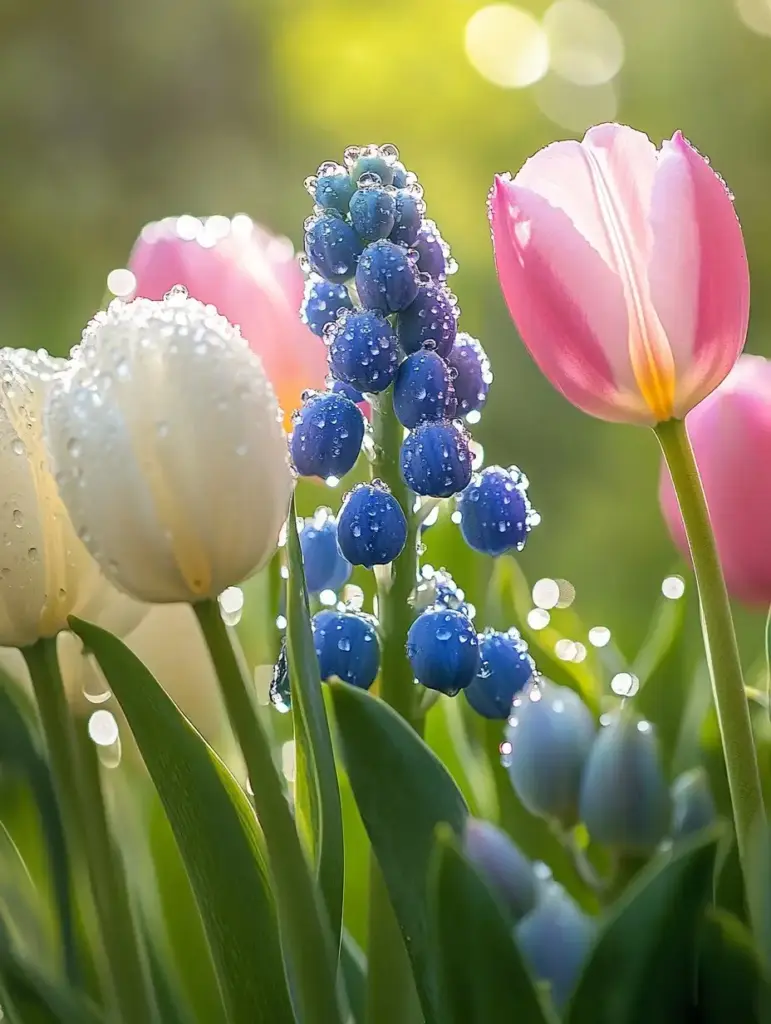
Grape hyacinths offer a striking contrast with their tiny, clustered blue or purple flowers. Their compact size and vivid color make them excellent underplantings for taller tulips.
These hardy perennials grow well in full sun or light shade and adapt to various soil types as long as drainage is good. They bloom in mid-spring, overlapping perfectly with tulips to create a colorful spring carpet that fades gracefully into summer.
3. Daffodil
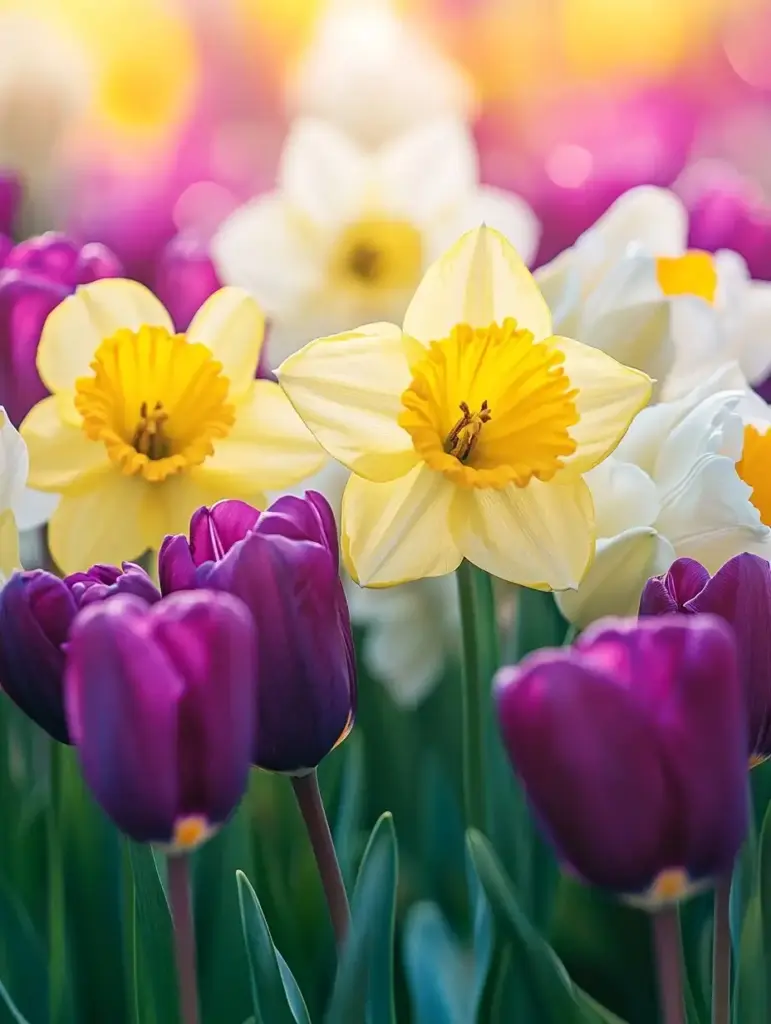
Daffodils bloom right around the same time as tulips, offering a cheerful burst of yellow and white. Their strong scent and toxicity to rodents also help protect tulip bulbs from being dug up.
They love full sun and well-drained soil, and they’re remarkably drought-tolerant once established. Planting daffodils with tulips adds color variety while also serving a protective function in your garden.
4. Allium
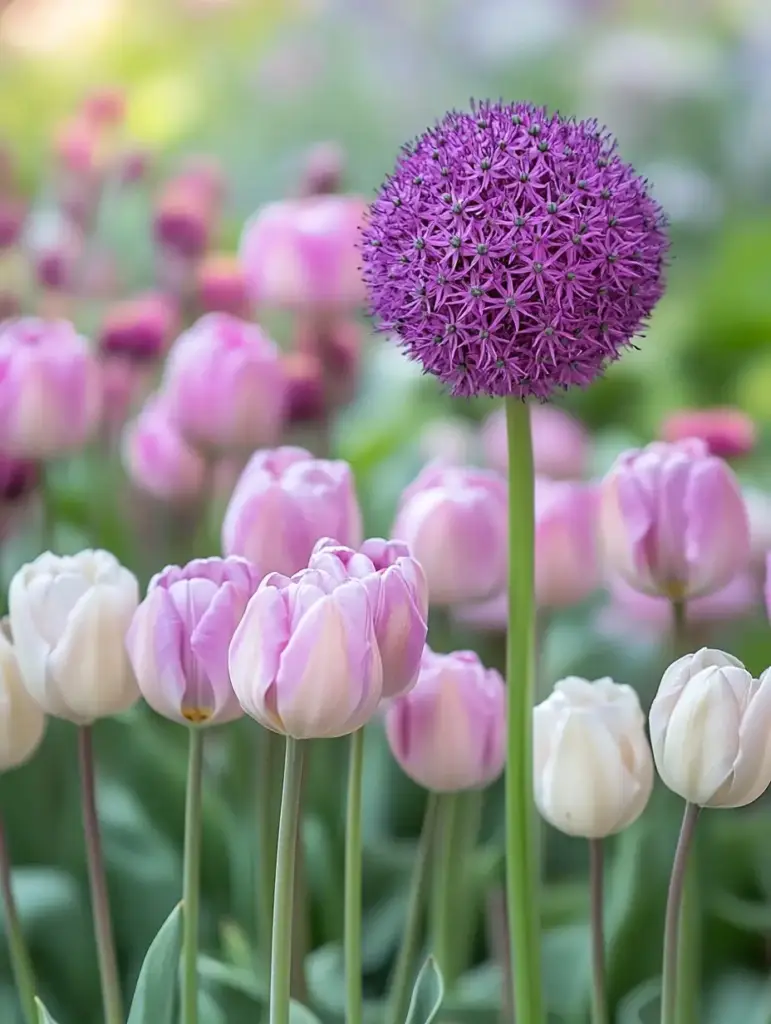
Alliums are tall, globe-shaped flowers that bloom just as tulips begin to fade, making them ideal for seamless seasonal transition.
Their bold forms in purples and whites add height and drama to the garden. Like tulips, alliums prefer full sun and well-drained soil. As a bonus, they repel pests such as aphids and rabbits, which helps keep nearby tulips healthy.
5. Pansy
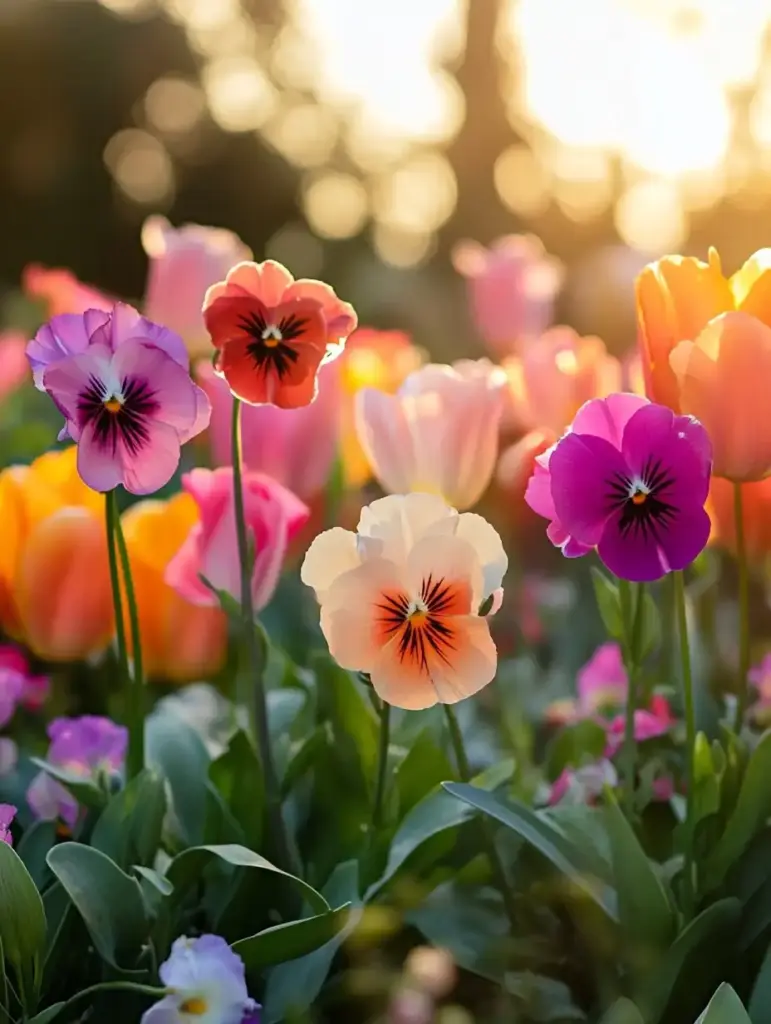
Pansies provide a pop of color in early spring and continue to bloom into summer in cooler climates. With hues ranging from deep purple to soft yellow, they pair wonderfully with tulips of nearly any color.
These compact annuals thrive in rich, well-drained soil and require regular watering. Plant pansies around tulip beds for a soft, blooming edge that enhances your spring display.
6. Snapdragon
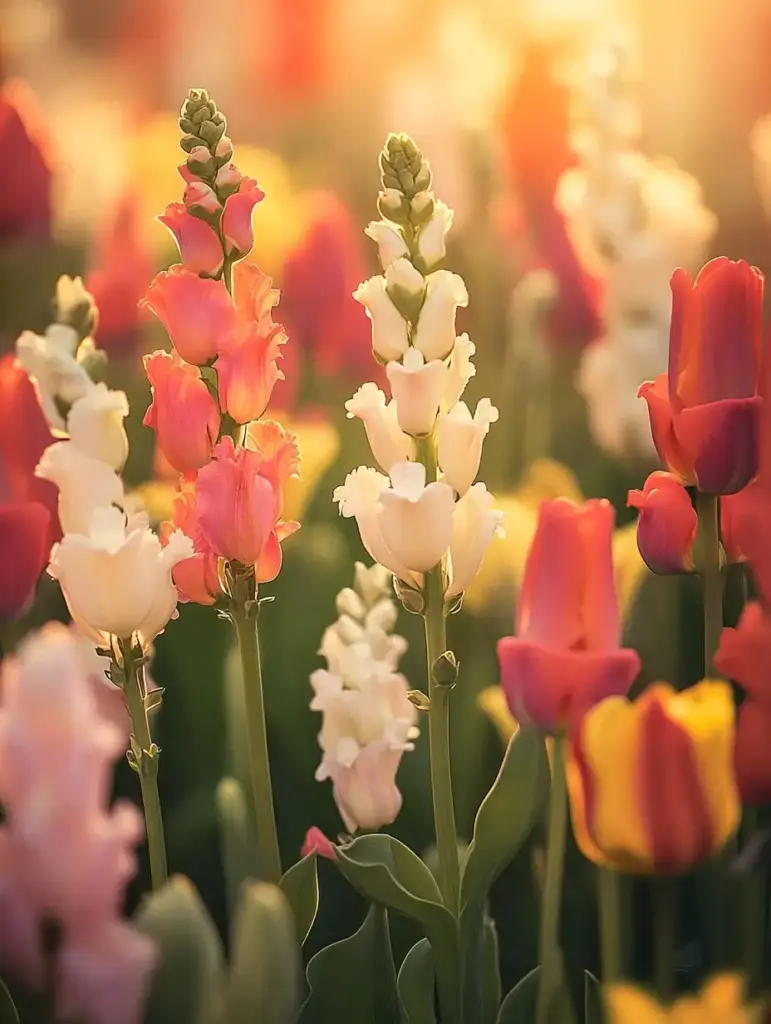
Snapdragons bring height and a rainbow of color to the late spring garden, blooming right as tulips finish their show.
They grow best in full sun and fertile, slightly moist soil. To keep them blooming longer, pinch back the first flower spikes. Their vertical structure complements tulip forms while adding longevity to the garden’s visual appeal.
7. Shasta Daisy

Shasta daisies bloom in early summer with classic white petals and golden centers. They contrast beautifully with tulip foliage as it begins to fade.
They’re low-maintenance and drought-tolerant once established, preferring full sun and moderately rich soil. Their clean appearance keeps garden beds looking tidy after tulips are done flowering.
8. Zinnia
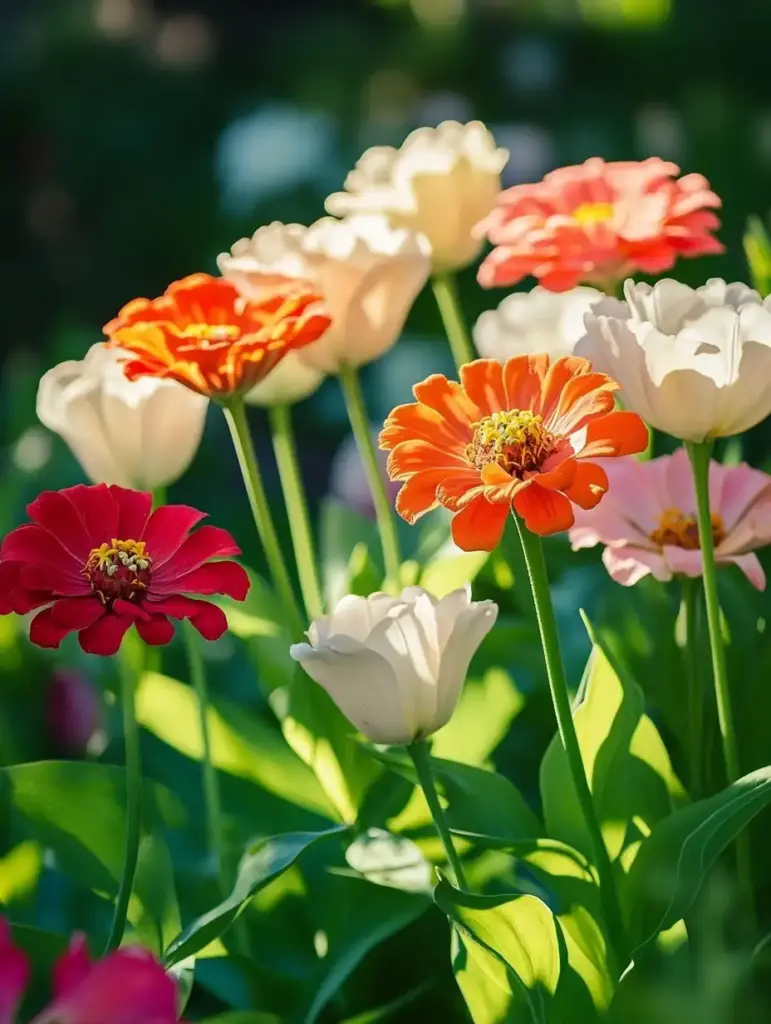
Zinnias are heat-loving annuals that bloom profusely from late spring into fall. Their bold colors—ranging from red and orange to pink and lime green—create a vivid contrast with fading tulip leaves.
Plant zinnia seeds after the last frost in a sunny, well-drained spot. They thrive with minimal care and tolerate drought, making them an ideal summer follow-up to your spring tulip bed.
9. Daylilies
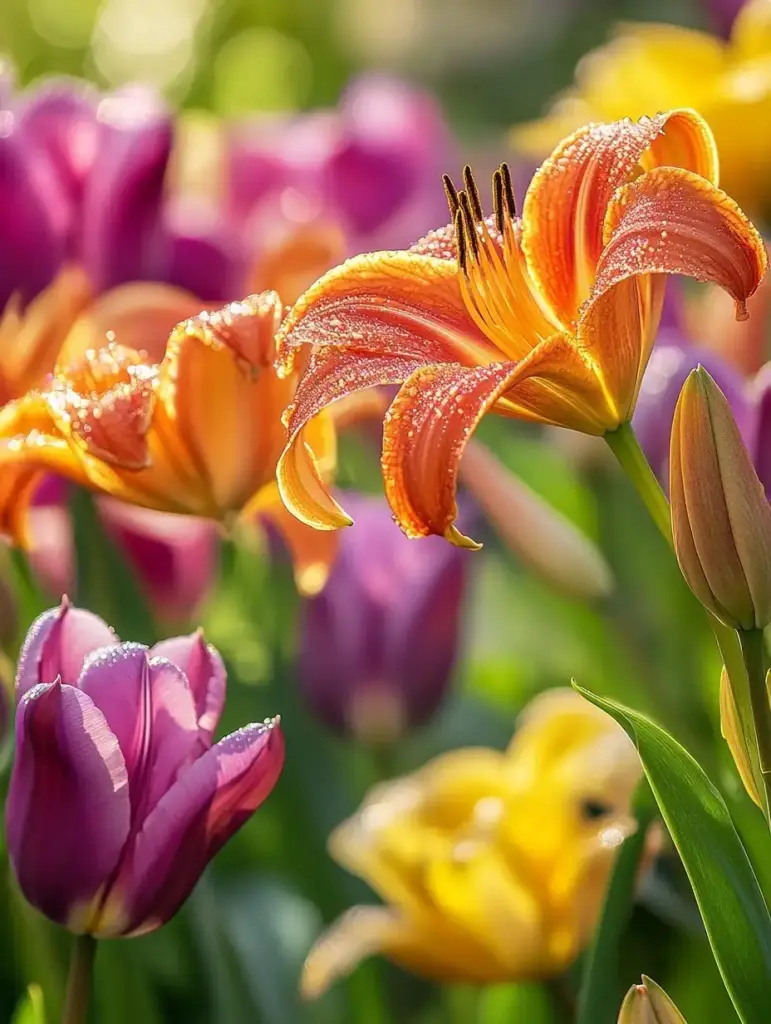
Daylilies are resilient perennials that bloom in succession throughout summer. Their trumpet-like flowers mirror the shape of tulips, creating visual continuity across seasons.
They grow in full sun to partial shade and prefer well-drained, slightly acidic soil enriched with organic matter. Once established, daylilies need only occasional watering, making them both practical and beautiful tulip companions.
10. Nasturtium
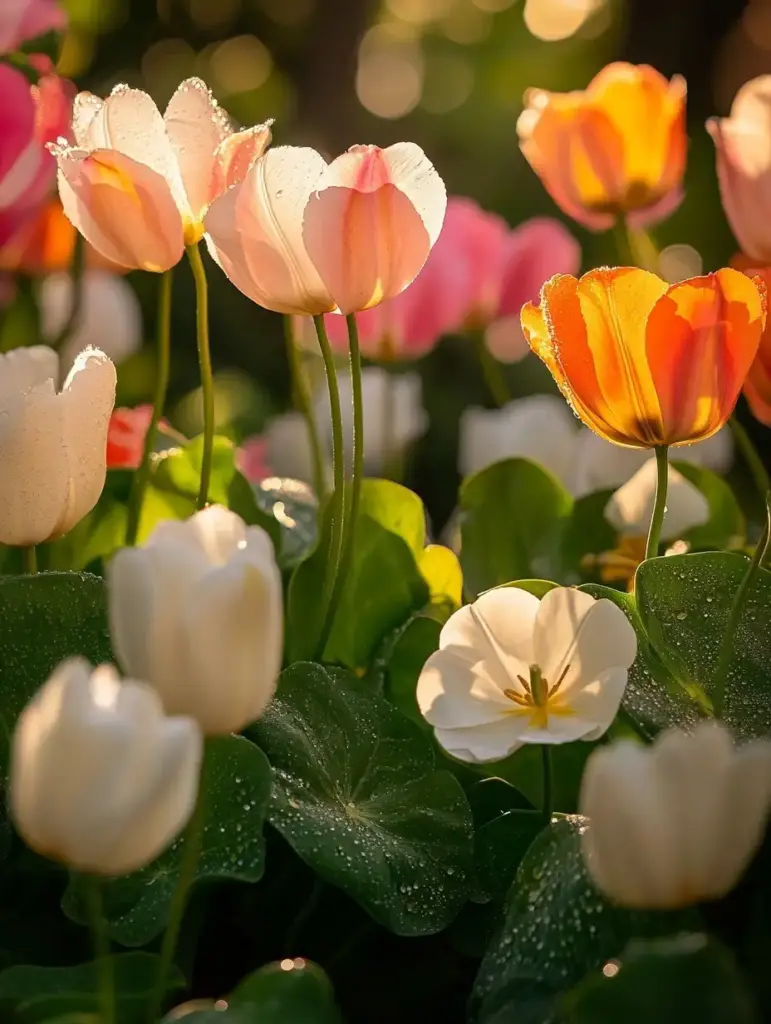
Nasturtiums are fast-growing annuals that sprawl with cheerful blooms in shades of orange, red, and yellow. Their foliage also helps hide dying tulip leaves.
They thrive in poor, well-drained soil and full sun. Don’t over-fertilize—lean soil encourages more blooms. Bonus: nasturtiums repel aphids and other garden pests, helping protect your tulip patch naturally.
11. Hostas
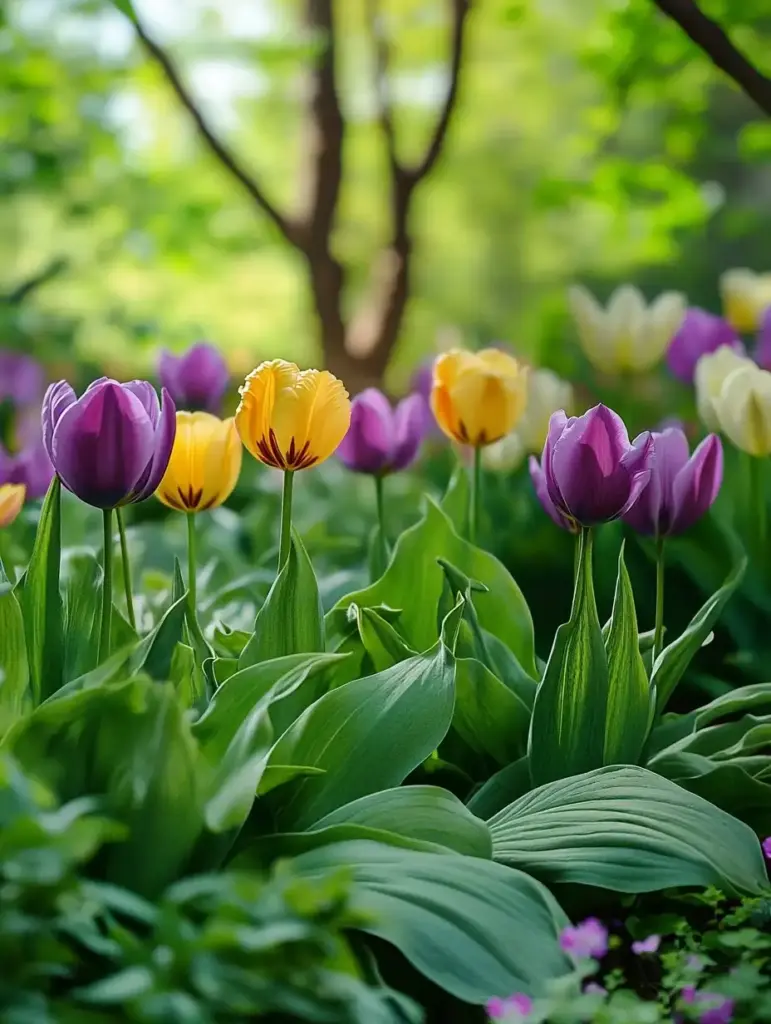
Hostas offer lush, textured foliage that fills in as tulip greenery declines. While they don’t bloom as brightly, their leaves provide contrast and volume in shaded areas.
These shade-loving perennials prefer rich, consistently moist soil and come in a variety of green, blue, and variegated forms. Use hostas to fill empty spaces around tulips in woodland or partially shaded gardens.
12. Marigold
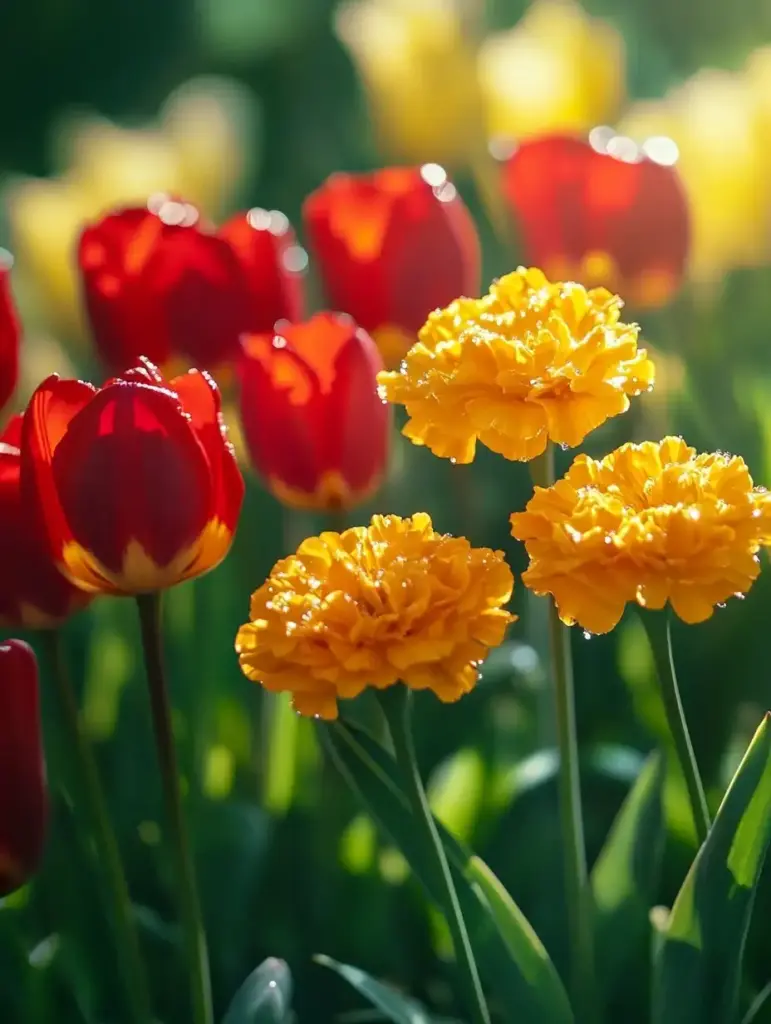
Marigolds are sunny, reliable bloomers that offer pest protection and cheerful color from early summer into fall. They help deter nematodes, aphids, and beetles, making them beneficial for tulips.
They grow best in full sun and moderately rich, well-drained soil. Deadhead regularly to keep flowers coming. Marigolds pair beautifully with tulips in raised beds, borders, or containers.
13. Sweet Alyssum
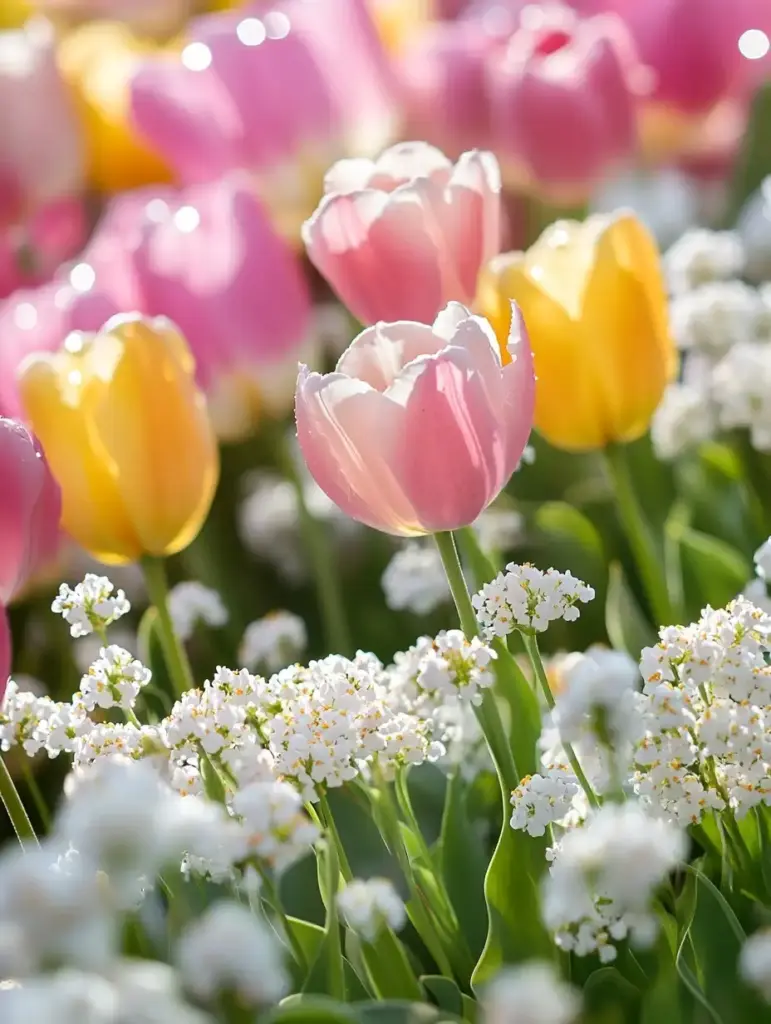
Sweet alyssum forms a low, fragrant carpet of tiny blooms in white, purple, or pink. It’s perfect for edging tulip beds and filling gaps as taller flowers fade.
It prefers full sun to partial shade and moist, well-drained soil. After its first flush of flowers, trim it back to encourage reblooming. Its gentle fragrance also attracts pollinators, boosting overall garden health.
14. Dianthus
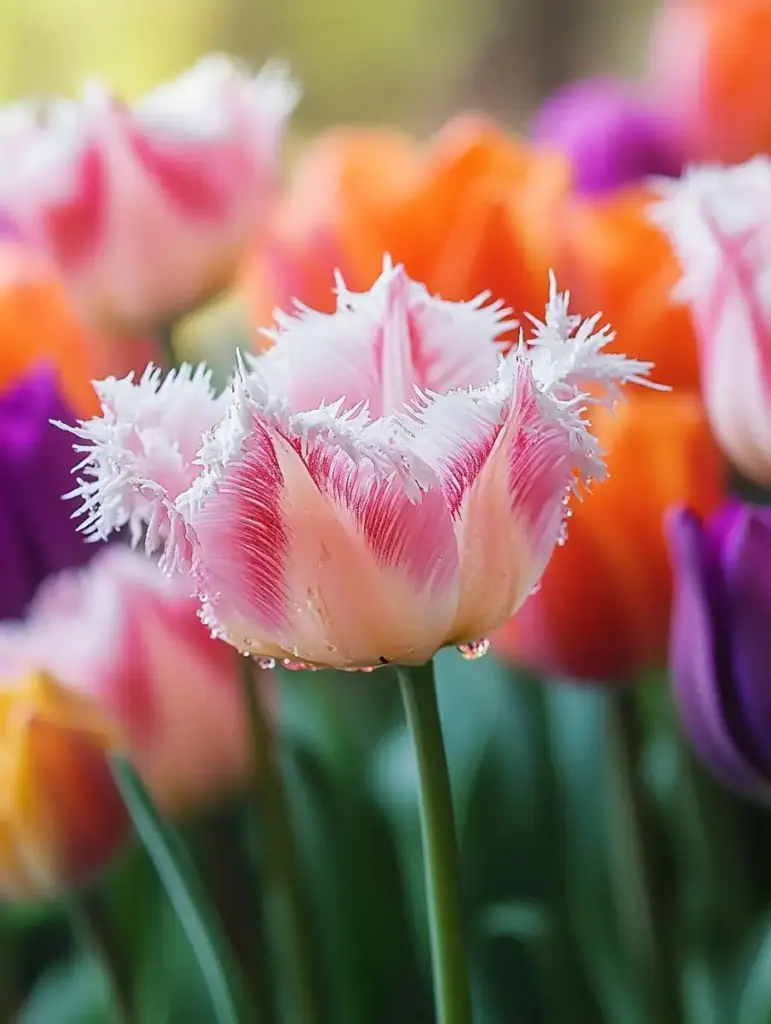
Dianthus, also called “pinks,” feature fringed petals in red, pink, and white tones with a spicy scent. They bloom in late spring and early summer, bridging the gap after tulips fade.
These compact perennials grow best in full sun and slightly alkaline, well-drained soil. Shear them back after flowering for a second bloom. Their tidy growth habit and pleasant fragrance make them an excellent border plant around tulip beds.
author:Conclusion
Choosing the right plants to grow with tulips ensures your garden doesn’t lose its charm once those iconic blooms fade. These companion plants not only extend seasonal color but also offer practical benefits like natural pest control, soil moisture retention, and attractive foliage to cover dying tulip leaves.
From early bloomers like crocus and daffodil to summer highlights like zinnias and daylilies, the right mix will keep your garden colorful and alive throughout the warmer months. With careful pairing and a bit of planning, your flower beds can remain as dynamic and lush as your springtime tulips.
Looking to refresh your tulip patch next year? Be sure to improve your garden soil and prep for a stunning transition with a smart companion planting strategy—your future self (and your garden) will thank you!
FAQ
What should I plant with tulips for continuous blooms?
Choose plants that bloom right after tulips fade, such as allium, zinnias, or daylilies. This helps maintain garden color and fill gaps left by tulips.
Do companion plants help tulips grow better?
Yes. Some companion plants deter pests (like marigolds or nasturtiums), while others provide ground cover to retain soil moisture or mask dying tulip foliage.
Can I plant perennials and annuals together with tulips?
Absolutely. Use perennials for long-term structure (like hostas or Shasta daisies), and annuals like pansies or snapdragons to fill in seasonal color.
What are good low-maintenance options?
Consider grape hyacinth, sweet alyssum, and marigold. These plants require little care and return or reseed easily, making them great choices for busy gardeners.
🌿 Love gardening inspiration? Follow me on Pinterest for bold plant ideas, tips, and seasonal color!
More Posts

